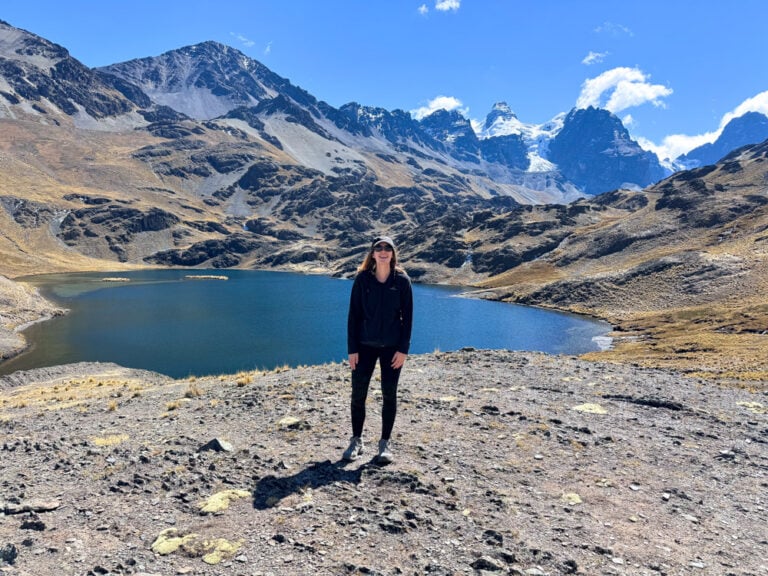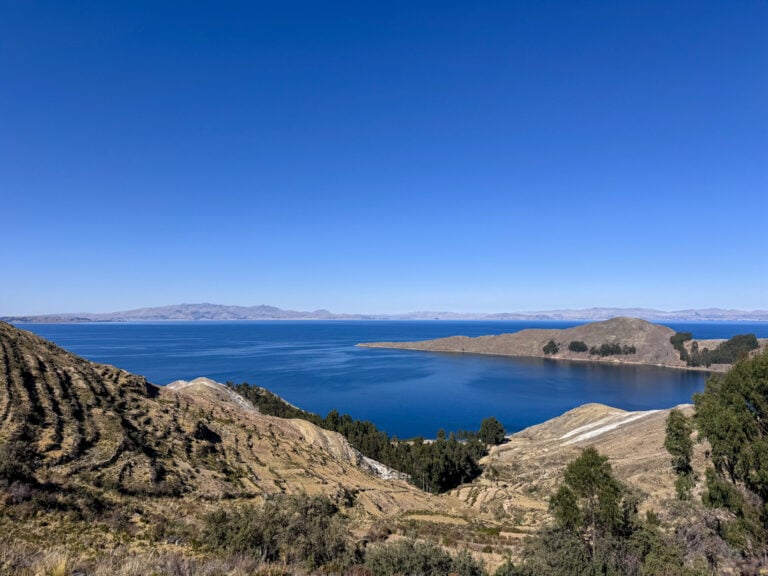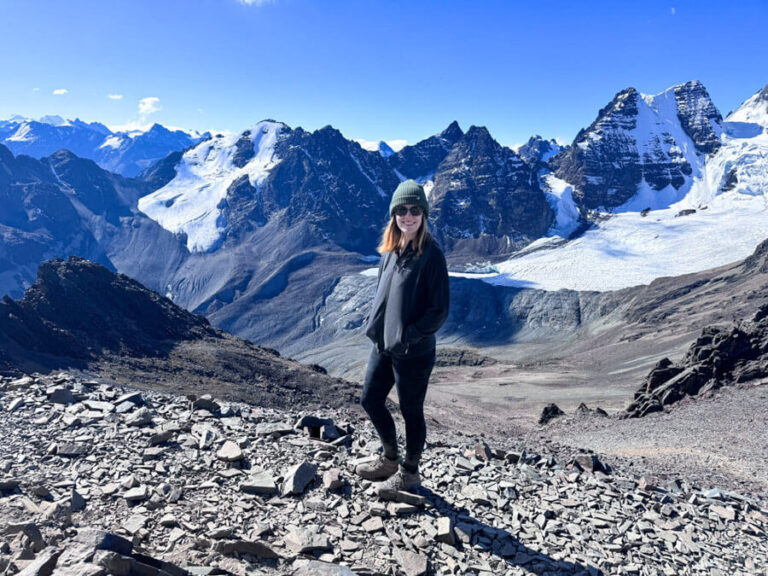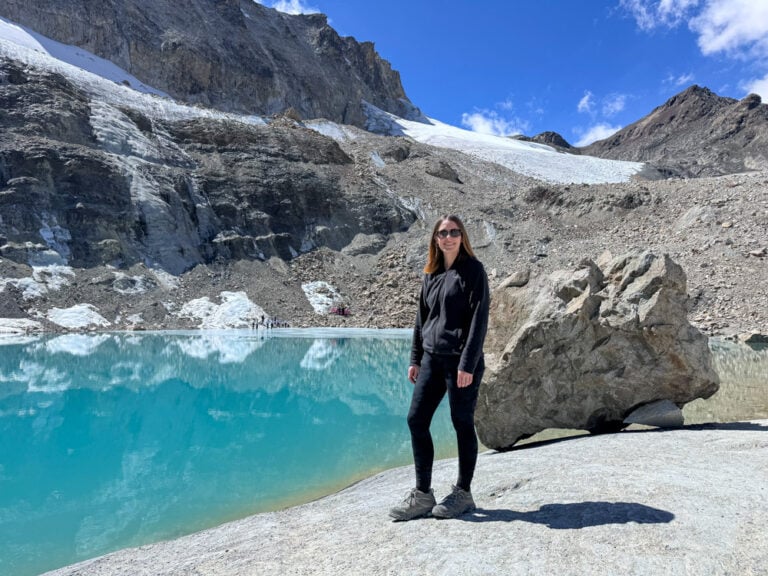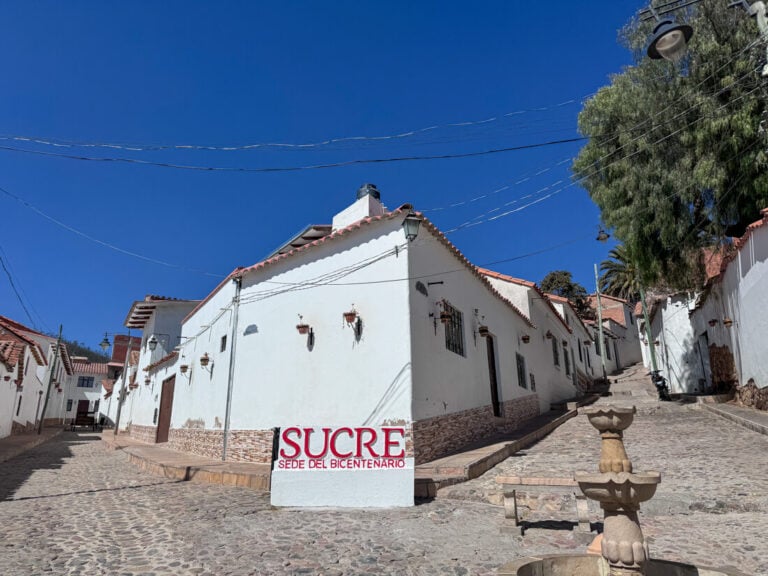5 Reasons to Visit Tupiza: Bolivia’s Wild West (2025 Guide)
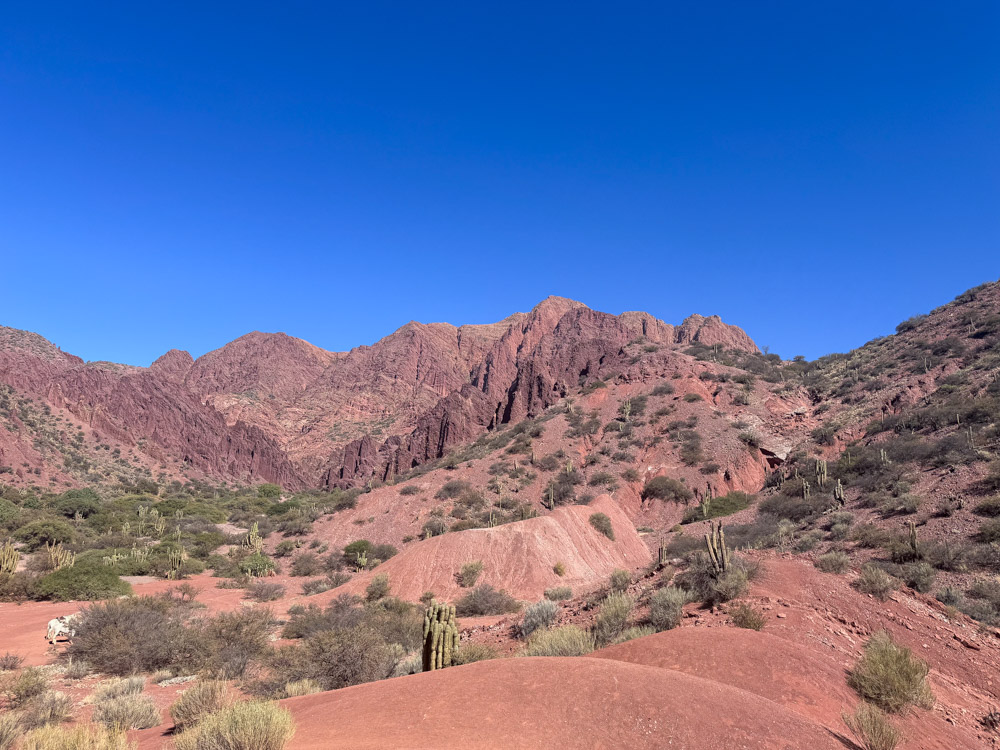
Tupiza is one of my favourite spots in Bolivia. This small but lively town is a fantastic place to experience a different side of Bolivia. Known for its stunning and unique scenery, Tupiza allows you to get off the beaten track and explore a side of Bolivia that not many visitors get to experience.
Thanks to its convenient location close to Argentina, the main reason people visit is to rest before or after crossing the border, but Tupiza has so much more to offer. I was only planning to spend a day in Tupiza around my Uyuni Salt Flats tour, but in the end, I stayed for three days.
Granted, there’s not much to see and do in Tupiza, but it’s a great place to enjoy a laid-back pace of life and take in the magnificent scenery. The famous town also has an interesting history. It’s known to be one of the last places visited by American outlaws Butch Cassidy and Sundance Kid. After fleeing to Bolivia, they were seen in Tupiza before being killed by the Bolivian Army in a nearby town.
In this guide, I’ve shared five reasons you should consider adding Tupiza to your Bolivia itinerary. I’ve also spoken about some basic logistical things, such as how to get to Tupiza, where to stay, where to eat and what to do.
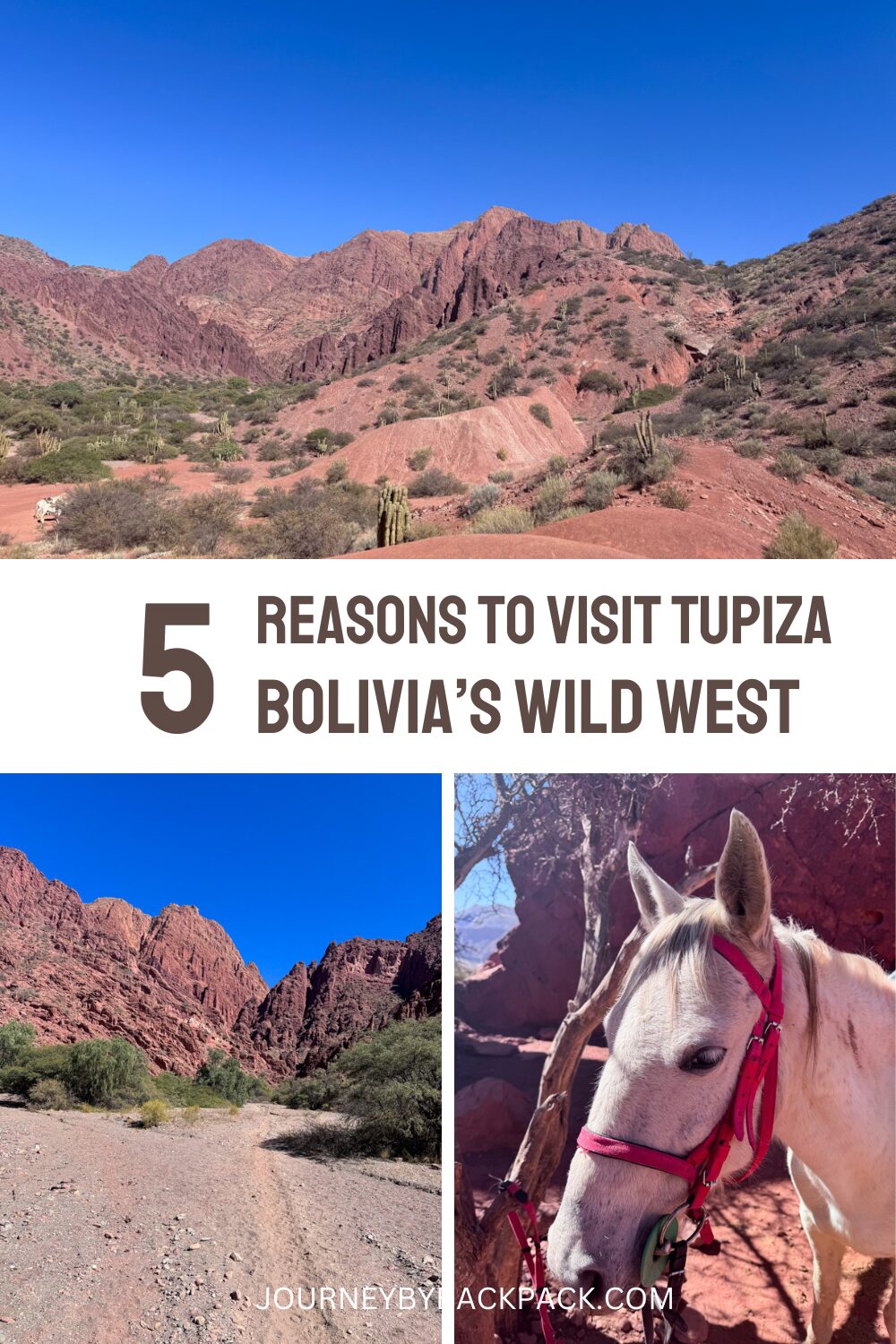
How to get to Tupiza
Tupiza is in the Potosí Department in the South of Bolivia. It’s a little bit out of the way, but it’s generally easy to get to. Here are a few options.
From Argentina
If you’re entering Bolivia from Argentina, you’ll likely be crossing the land border at Villazon. Tupiza is about 90km north of Villazon, and there are regular colectivos between the two destinations.
There’s not much going on in Villazon, and it’s not considered the nicest of places to spend some time, so it’s worth heading straight to Tupiza to kick off your Bolivia adventure.
From Uyuni
There are regular colectivos between the town of Uyuni and Tupiza. If you’re coming from Uyuni, this is likely the easiest way to reach Tupiza. However, the colectivos need to be full before they leave, so you might find yourself waiting a while.
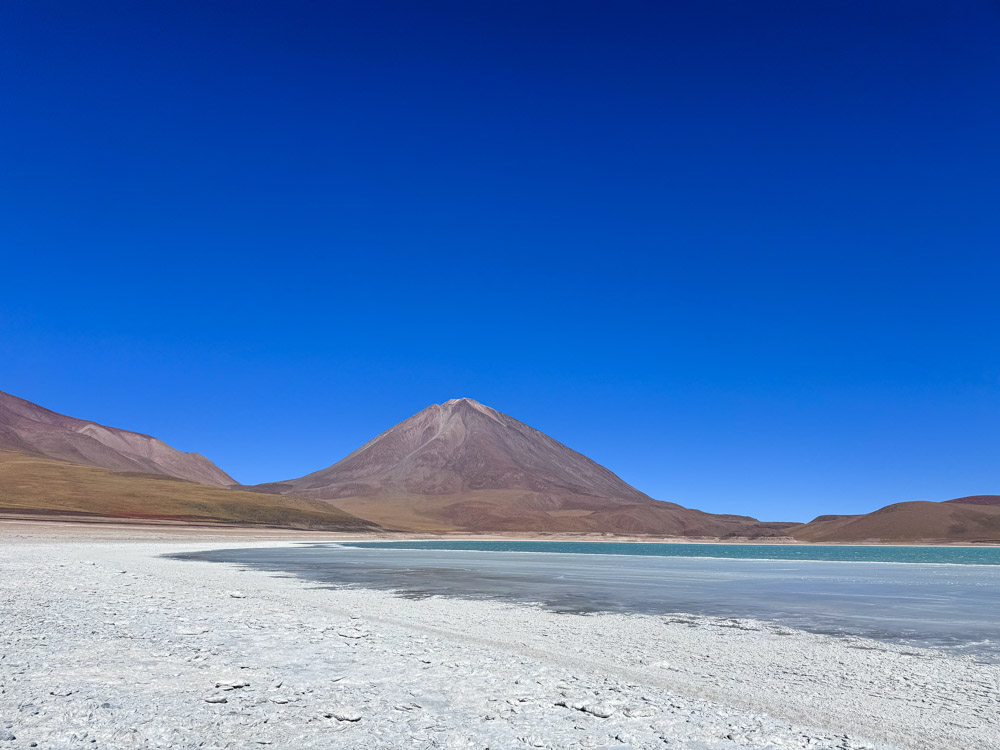
By bus
Tupiza is connected to most major cities in Bolivia via daily buses, including Potosi, Sucre, and La Paz. I found the best way to book bus tickets in Bolivia was through Tickets Bolivia. It can be cheaper to buy your tickets at the bus station, but I prefer to have everything booked before arriving (and it’s not uncommon for the buses to sell out).
The main bus station is in the centre of Tupiza, and most hostels and hotels are within walking distance. If you don’t feel like walking, there are also Tuk Tuks. You’ll likely find the bus to your next stop is a night bus.
Five reasons to visit Tupiza (and things to do)
If you’re considering visiting Tupiza, here are a few reasons why you should absolutely include it on your Bolivia itinerary.
The landscape
Tupiza is known as Bolivia’s Wild West. With its unique red landscape, impressive rock formations and connection with the famous Butch Cassidy and Sundance Kid, arriving in Tupiza felt like arriving in America’s Wild West.
As I travelled from Uyuni to Tupiza, I was amazed at the changing landscape. This is genuinely a beautiful area of Bolivia, and the landscape is like no other. I was lucky enough to explore a lot of Bolivia, and when it comes to magnificent scenery, Tupiza stands out above the rest.
There are various ways to explore the scenery around Tupiza, including:
- Hiking (you can hire a guide if you’re not keen on going alone)
- Horseback riding
- Tuk Tuk tours (they will take you to the famous scenic spots)
- Jeep tours
As Tupiza isn’t the most popular tourist destination in Bolivia (yet), it can be quite hard to find enough people for the jeep tours to run (unless you’re happy to pay a premium). I was keen to do a Jeep tour, but unfortunately, I was the only one, so I opted for horseriding instead.
I suggest contacting La Torre Tours to see what’s possible during your visit. You can also hire a local guide or Tuk Tuk driver through your hotel.
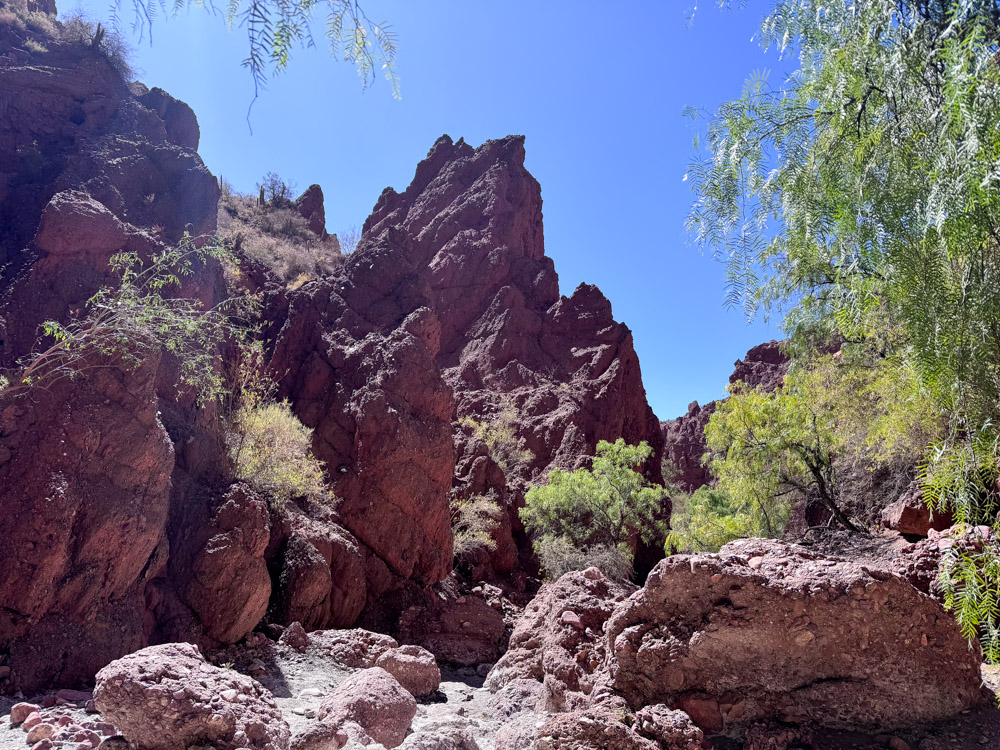
To experience local life
Tupiza certainly felt different from other areas I visited in Bolivia. It was much less catered towards tourists and felt much more local.
One of the best ways to get a feel for local life in Tupiza is to visit the Mercado Central. This incredible market is filled with vendors selling local products, and you can also try some cheap local food.
As I walked through the Central Market, I was greeted by friendly vendors who offered me tastings of their fruits and vegetables on sale. There were also women who would make you a custom fruit juice or smoothie.
Another popular spot for the locals is watching the sunset from Cerro de la Cruz. This is really a beautiful spot. As the sun goes down, the red rocks surrounding the town start to glow red and orange. It’s stunning.
The climb here takes about 30 to 40 minutes, depending on your pace. It’s very, very steep, and there are also some loose rocks, so make sure to wear good shoes with a strong grip.

To get off the beaten path
Although not quite as popular as other nearby countries such as Peru and Argentina, Bolivia is still a popular destination for backpackers and regular travellers alike.
Most visitors seem to stick with the common well-trodden route of La Paz, Sucre and Uyuni, missing out on so much of what Bolivia has to offer.
If you want to escape the tourist route, Tupiza is a great option! I barely saw another tourist while in the lively town, and as I said above, it’s a great place to immerse yourself in traditional local life.
Tupiza is growing in popularity, and I’m sure in future years it will become a must-visit spot in Bolivia. But for now, Tupiza is a great place to get off the beaten path.
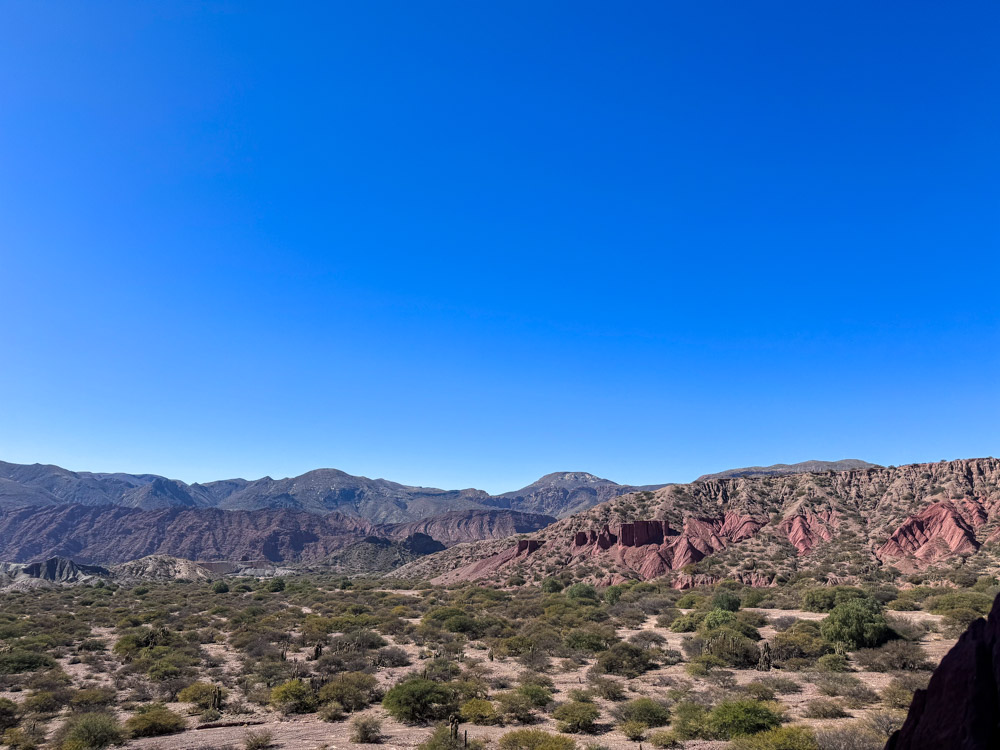
To extend your Salt Flats tour
Most Salar de Uyuni tours run between Uyuni and San Pedro de Atacama in Chile. However, it’s becoming a more popular option to begin your tour in Tupiza. This adds a day to your tour, meaning it will likely be three nights and four days (instead of two nights which tends to be the case for a standard tour).
The extra day takes you off the beaten path and gives you the chance to explore the deep red rock canyons of the Tupiza area. This includes spots such as the magnificent El Sillar and Ciudad del Encanto, home to some incredibly unique rock formations.
The extra day takes you to places completely different from the rest of the tour. As well as colourful lagoons and salt flats as far as the eye can see, you’ll also get to see the other-worldly landscapes found around Tupiza.
If you have the choice to begin your Salt Flats tour in Tupiza, I highly recommend it. I went with La Torre Tours and can’t recommend them enough. They are based in Tupiza and also offer shorter tours around the area.
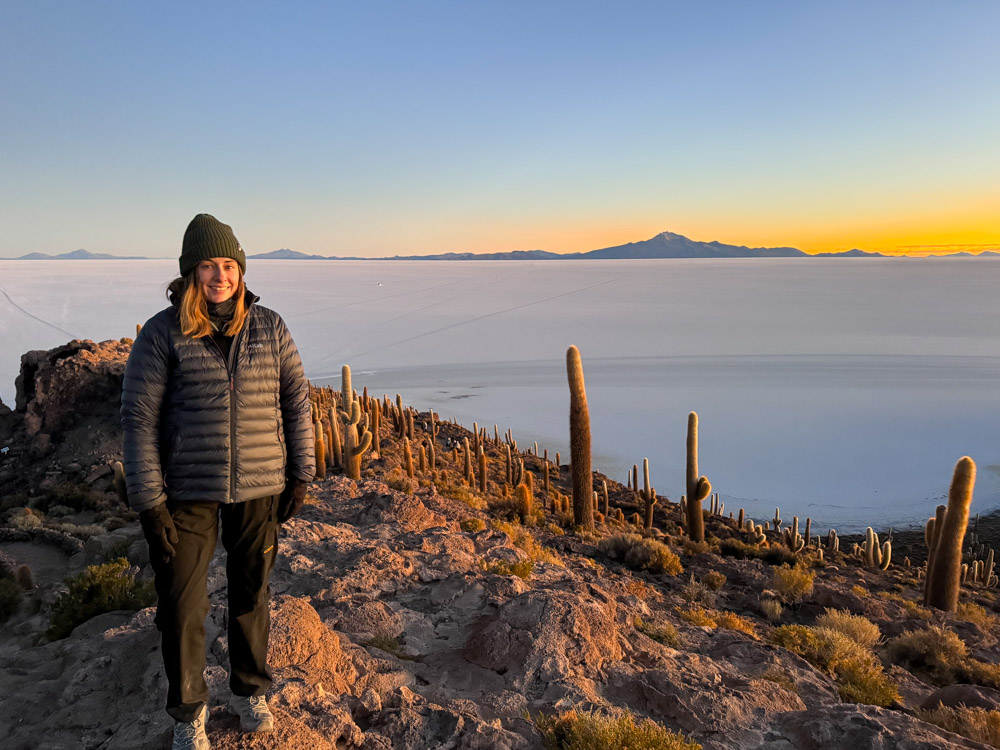
The hiking and the horseback riding
One of the best things to do in Tupiza is go horseback riding. Known as Bolivia’s Wild West, it’s only right that part of your visit includes a horseback ride through the epic scenery.
I’m always cautious of horseriding anywhere in the world. To be honest, I’m cautious of anything involving animals. It’s not uncommon for horses to be mistreated and not properly cared for. I really don’t want my money to support any form of animal abuse.
However, the horses I saw in Tupiza were all very well cared for, had space to roam and seemed to trust the guides. With all this in mind, I decided to go for it and booked a 3-hour horseriding tour around Tupiza.
The horseback ride takes you to popular spots, which you can also hike to. These include Puerta del Diablo, Valle de los Machos, and Cañon del Inca each at the end of a long dirt road. At each spot, you can get off the horse to explore by foot.
It’s also possible to extend your tour to a full day, or even multi-day, and visit places further afield, including Cañon del Duende.
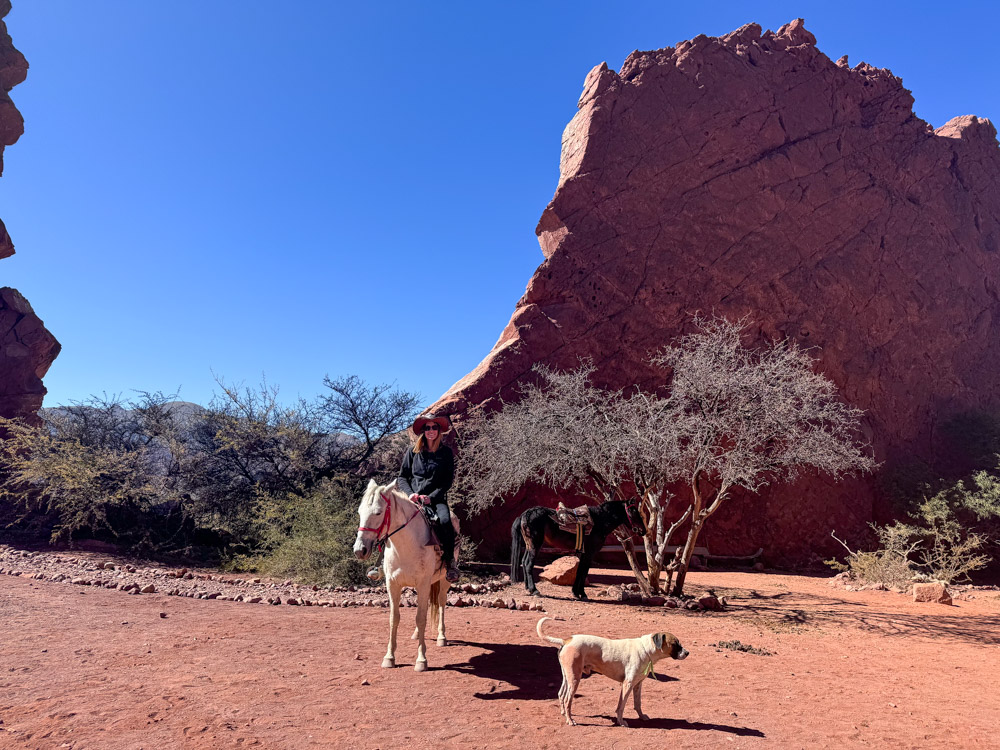
I booked my horseback riding tour through my hotel for $25, but it’s also possible to book through La Torre Tours or Tupiza Tours. All the horses I saw seemed very calm, with no issues controlling them. However, if you’re a bit nervous, it’s worth asking your guide for a calm horse (‘tranquil’ in Spanish).
If horseback riding isn’t your thing, there are also several epic hikes around Tupiza. This includes places visited on the horse. One of the best hikes is to Cañon del Inca. You can walk deep into the canyon to see its incredible features.
Several tour agencies around Tupiza have hiking maps (although they do charge a fee). However, the paths can be hard to follow as they aren’t well-signed, so it’s worth having a map. The hiking paths are also known to be patrolled by dangerous stray dogs, so it’s important to be prepared and carry some rocks to scare them away.
I was a little too nervous to hike alone as I was worried about the dogs, as well as getting lost in the maze of similar-looking rocks. My hotel gave me the option to hire a guide or Tuk Tuk driver to take me for $40, which seemed like a fair compromise.
If you walk down the main road in Tupiza, you’ll find several tour agencies who can help you plan your Tupiza itinerary.
However you decide to explore Tupiza, it offers some of the most unique and incredible scenery Bolivia has to offer.
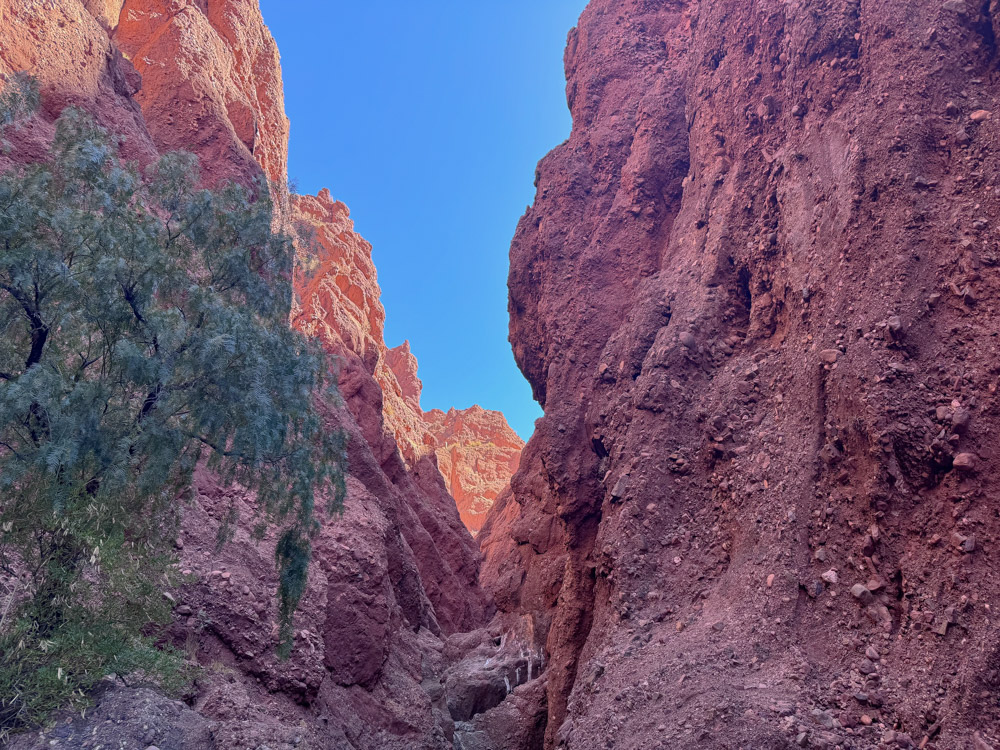
Where to stay in Tupiza
There are a few accommodation options in Tupiza. As with much of Bolivia, it tends to be basic accommodation on offer, but at a price great for those on a budget.
The most popular place to stay in Tupiza is Hostal Butch Cassidy. There are several types of rooms on offer, a hot shower, and breakfast is included.
If you want to “treat yourself” a little bit, I recommend staying in El Grano de Oro. The family-run hotel offers double beds, clean rooms, hot showers, and a delicious breakfast. Honestly, it was one of the best hotels I stayed in during my trip to Bolivia. It’s not the cheapest, but it’s great value for what it is. The family who runs the hotel is so friendly and welcoming.
Another popular hotel in Tupiza is Hotel Mitru. I met two girls who stayed here who loved it. It has its own tour agency downstairs, and they mentioned that the breakfast buffet was great. It also has a swimming pool (although only really relevant for those visiting in the summer).
Where to eat in Tupiza
Tupiza isn’t exactly known for its food, but there are certainly a few restaurants well worth trying.
Aside from the Mercado Central, here are a few of my favourite places to eat in Tupiza:
Avanti Cafe Bistro. This relatively new restaurant offers a taste of Italy in Bolivia. It’s a simple menu, but everything is fresh, and you can find some of the best pizzas in Bolivia.
Restaurant Green Planet. This small and cosy restaurant serves up a “menu del dia”, a set menu comprising of three courses. Each of the dishes is home cooked and they offer great vegetarian options. This was by far one of the nicest home-cooked meals I had in Bolivia. I went for dinner, and the starter was a quinoa soup. I opted for the vegetarian main, which was quinoa burgers with chips, vegetables and rice. The dessert was a chocolate quinoa pudding. It was delicious, but just be prepared for HUGE portions.
Marcelina Resto Bar. Another great spot serving up familiar and delicious food. I actually ended up eating here twice. The menu consists of traditional Bolivian dishes as well as tasty pizzas, burgers and a delicious lasange.
The Alamo. I didn’t get round to eating here, but if you’re after cheap and local food in a lively spot, this could be a great option. A friend ate here and said it was great.


Safety in Tupiza
As a solo female traveller, I felt incredibly safe in Tupiza and had no issues (which is true for my entire backpacking trip around Bolivia).
This small town is full of friendly locals, and despite being a little off the beaten path, no one seemed to pay any negative attention to the few tourists in the town. I walked to the bus stop by myself at night and was helped by a kind local when my bus was cancelled (long story).
Of course, nowhere in the world is 100% safe so it’s a good idea to be aware of your surroundings, especially when travelling solo. Once it got dark, I stuck to the busy main street and avoided walking alone anywhere that felt a bit quieter.
One of the biggest safety issues in Tupiza (and arguably Bolivia and even South America as a whole) is the stray dogs. During the day, they don’t tend to be an issue. But at night, they can become much more territorial and even aggressive.
There were a lot of dogs in Tupiza, and I certainly encountered a few barking at me. During my horseriding tour, a few dogs seemed bothered by the horses and barked aggressively at them. Thankfully, the horses didn’t seem to care.
However, it’s important to know that a pack of stray dogs is known to roam the hiking trails around Tupiza. My hotel warned me not to hike alone, as a girl had been attacked by the dogs a few days before. Thankfully, she was okay.
If you do find yourself walking alone away from a busy area, consider carrying some rocks or a stick. This way, you can try to scare the dogs away if they are barking at you.
If you’re not keen on horseback riding, you can hire a guide or Tuk Tuk driver to take you to the famous scenic spots around the town. At the time of my visit, this was $40 for a full day (which is not bad value in my opinion).
If you are going off exploring, make sure to carry plenty of water. Tupiza can get hot, and the sun is relentless (even in the winter), so don’t get caught off guard.
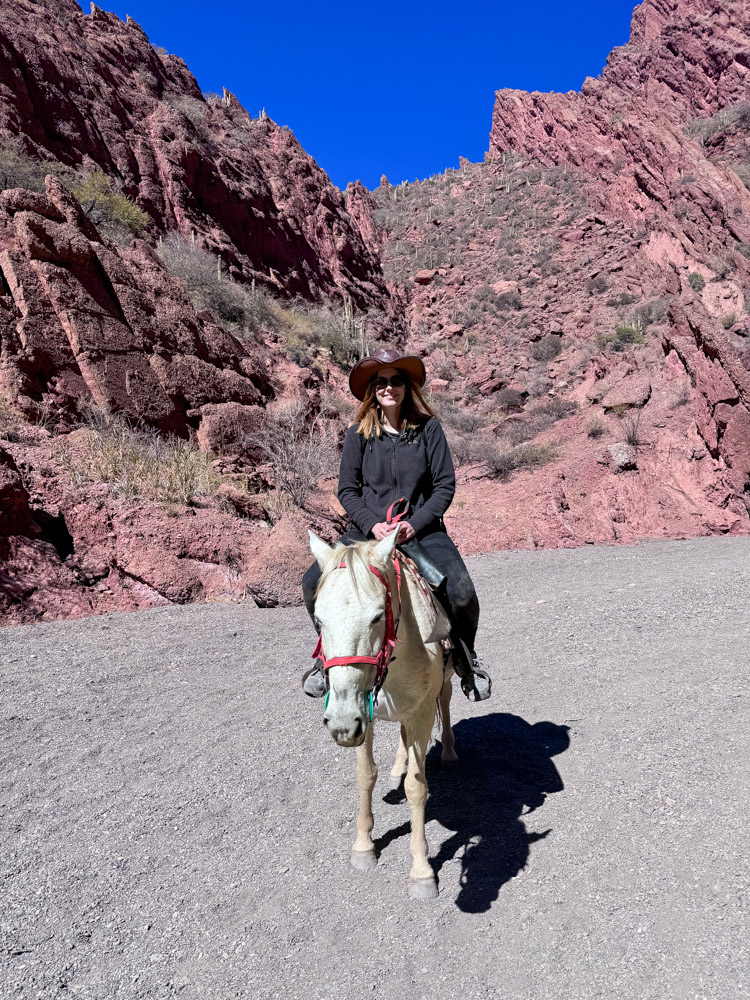
How long to spend in Tupiza
Wondering how long to spend in Tupiza? Personally, I think it’s worth spending at least one full day in this laid-back town, and two if you have the time.
After my Salar de Uyuni tour, I spent the first day relaxing. I wandered around the town and the Central Market and hiked to a beautiful viewpoint. The second day was spent exploring the surrounding area and the unique rock formations and landscape.
It would be difficult to see everything Tupiza has to offer in one day, but it can certainly be done, and you’ll be able to see the main attractions. I suggest spending your morning on a horseback riding tour and the afternoon exploring the town and Central Mercado.
Tupiza is a good place to slow down and relax, especially if you’re about to head to the Salt Flats or have just done the border crossing from Argentina.

